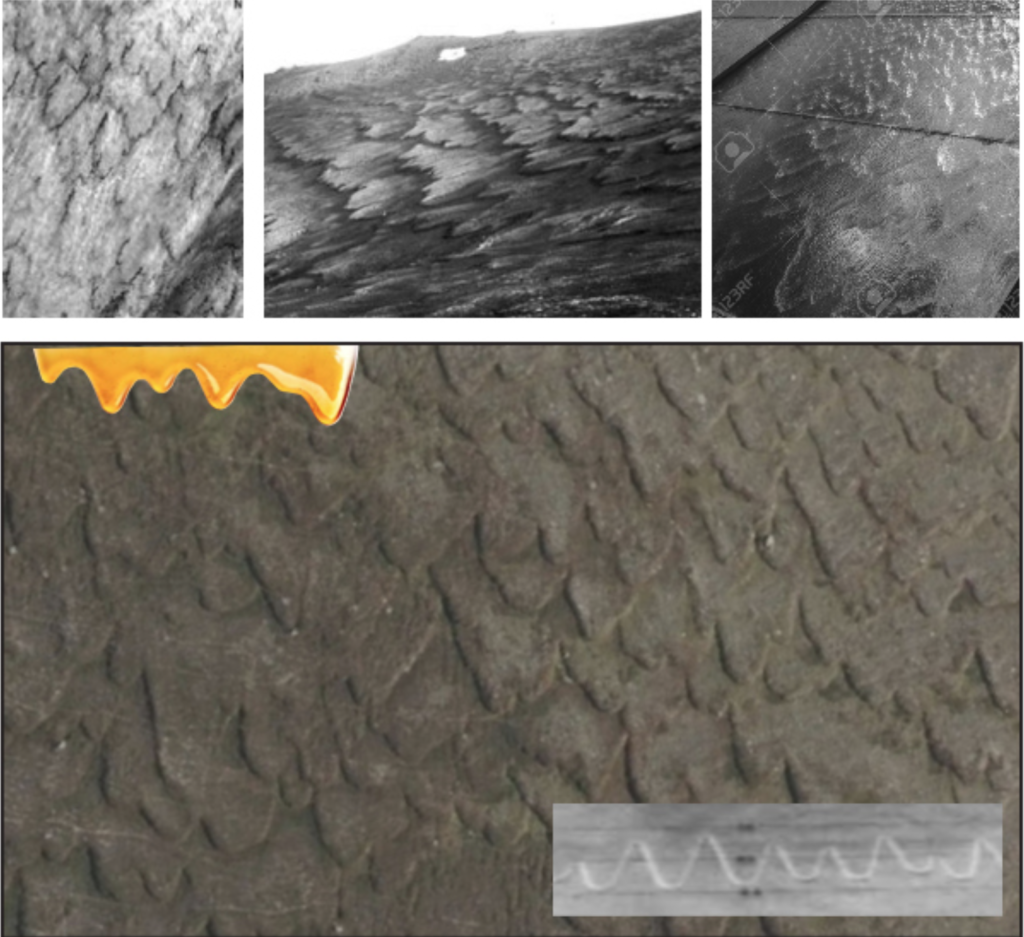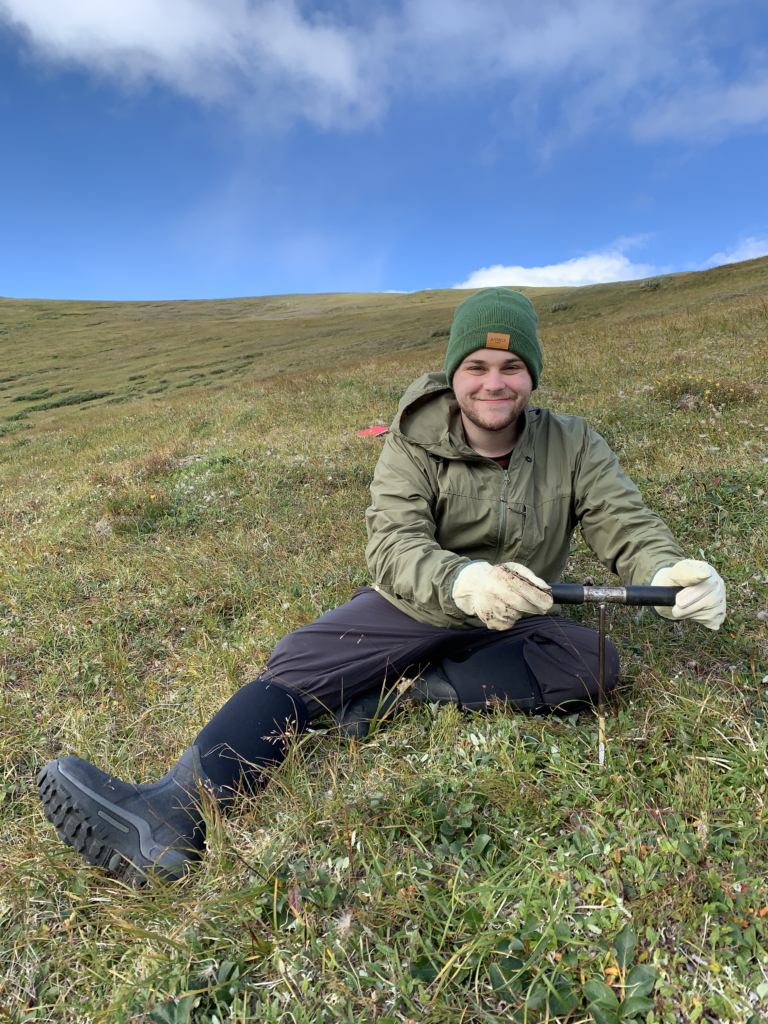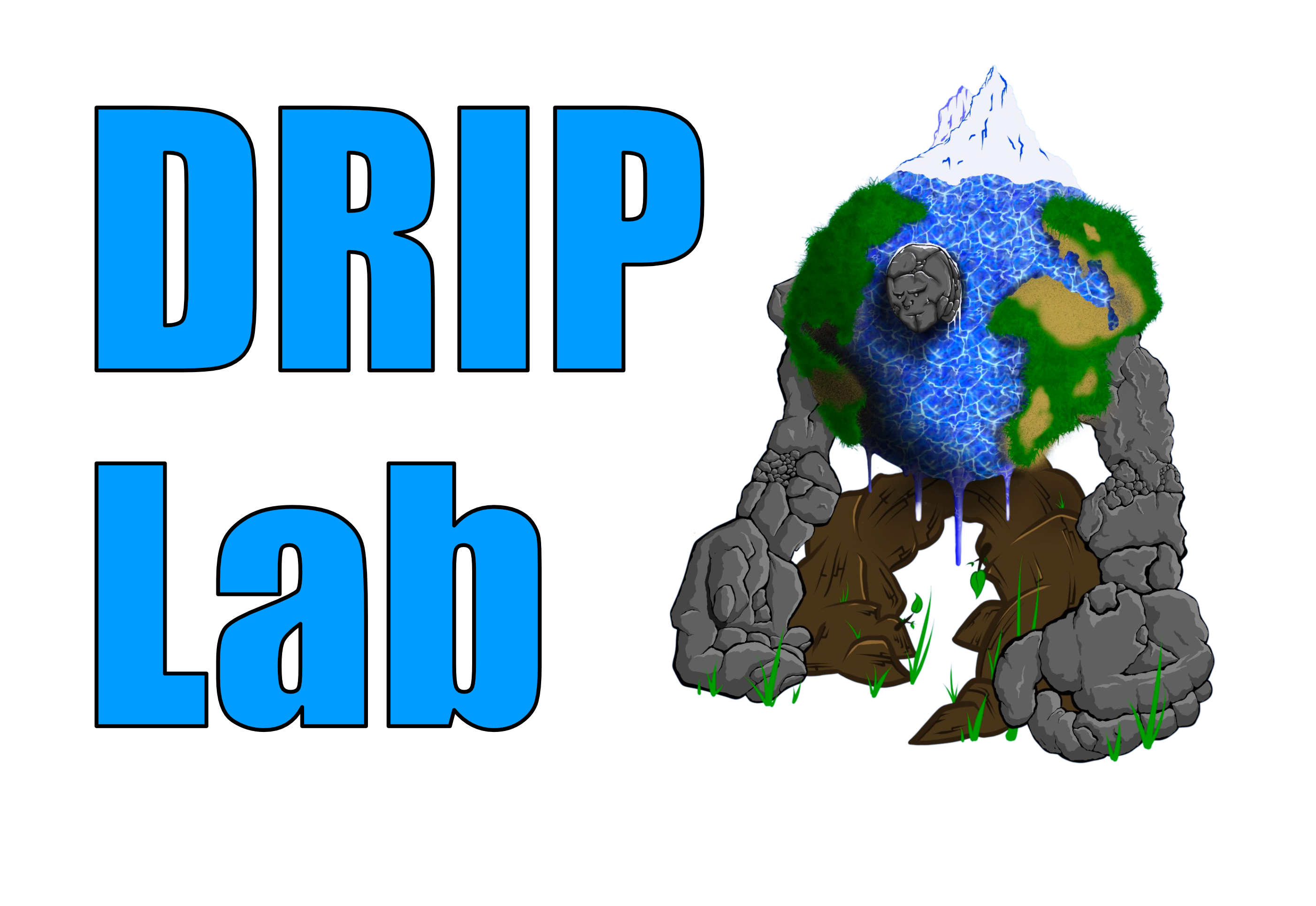Icy soils
Arctic soil movement, accumulation and stability exert a first order control on the fate of permafrost carbon in the shallow subsurface and landscape response to climate change. A major component of periglacial soil motion is solifluction, in which soil moves as a result of frost heave and flow-like “gelifluction”. Because soliflucting soil is a complex granular-fluid-ice mixture, its rheology and other material properties are largely unknown. However, solifluction commonly produces distinctive spatial patterns of terraces and lobes that have yet to be explained, but may help constrain solifluction processes.
We’re using theory, remote sensing and numerical modeling- and soon physical experiments- to better understand the physical basis for solifluction pattern formation. In particular, we’re drawing connections between solifluction, classic fluid instabilities (such as paint dripping down a wall or icing on a cake), and granular mechanics. See our recent manuscript for more information about this ongoing work.
And now, PhD student JohnPaul Sleiman is using HiRISE imagery to look at lobate patterns on Mars! He is also conducting experiments in our walk-in climate chamber to better understand how climate parameters such as temperature amplitude and cycling rate affect frost heave.


